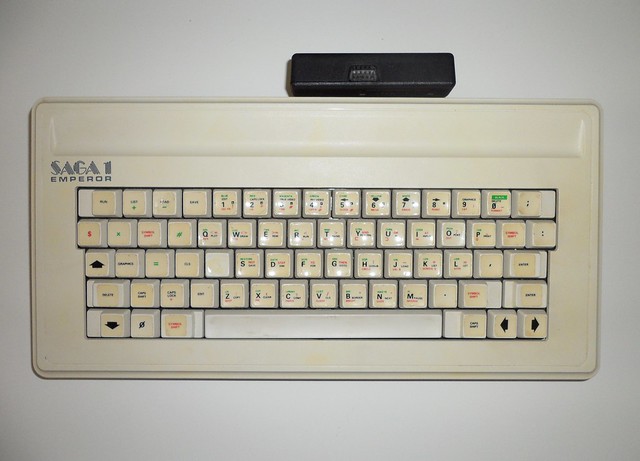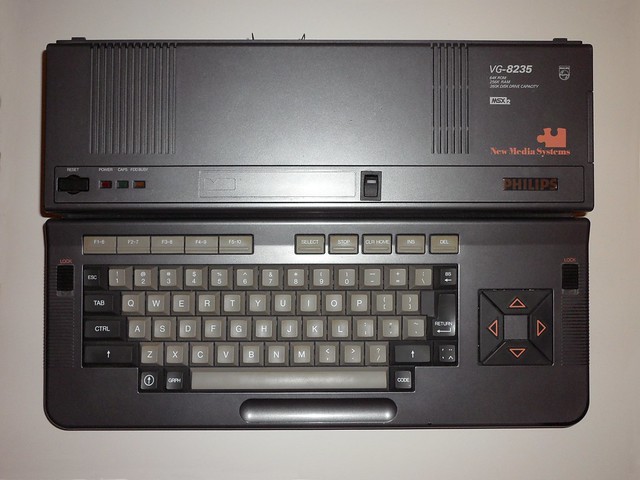Mi predilección por el ZX Spectrum es un tanto personal, ya que fue el ordenador con el que me inicié en la informática cuando era niño y que seguramente fue un factor determinante para que mi vida académica y profesional se decantara por la Informática. De hecho, aún conservo mi ZX Spectrum 48K. En su momento, apenas pude programar nada interesante con él, a pesar de todos mis intentos, aunque al menos aprendí algo de BASIC.
Las características técnicas del modelo 48K son:
- Zilog Z-80A 3.5 MHz,
- 16 KB de ROM con un intérprete BASIC de Nine Tiles
- 48 KB de RAM (6912 bytes para Video)
- ULA a medida fabricada por Ferranti (RAM, E/S, Teclado, Cinta, Video y Sonido)
- Diseñado en 1982
 |
| Mi ZX Spectrum en su estado actual ampliado con un teclado SAGA1 Emperor y una interface Kempston DK'tronics |
Y pasados todos estos años, estos podcasts sobre retroinformática han logrado despertar mi interés por el MSX. Lo interesante del MSX es que no se trata de un modelo de ordenador de un empresa determinada, sino que se trata de un estándar que estaba apoyado por varias compañias japonesas y la incipiente MicroSoft, que se encargaría de dotar al estándar de un intérprete BASIC, MSX-BASIC, y en la revisión MSX 2, de un gestor de discos llamado MSX-DOS, muy similar a CP/M, y por ende, semejante al popular MS-DOS. Si bien, ya conocía en su época de la existencia de los ordenadores MSX, en aquellos tiempos no eran tan populares como el Spectrum en España. Posiblemente llegaron más tarde a un mercado copado por el más económico y popular ZX Spectrum, que además contaba con un catálogo de juegos mucho más amplio. Aunque el estándar MSX, y sus revisiones posteriores como MSX2, eran técnicamente superiores, Sinclair consiguió dar en el clavo al ofrecer un precio competitivo en el momento adecuado. MSX sólamente fue tremendamente popular en Japón, mientras que en Europa se popularizó ampliamente en Holanda, seguramente por el hecho de que la compañía holandesa Philips apoyó el estándar MSX/MSX2 y lanzó numerosos modelos de ordenadores que cumplian este estándar.
Pues bien, dado mi tardio interés por estos ordenadores, me he hecho con un ordenador MSX2 Philips VG-8235. Se trata de un ordenador bien robusto, fabricado en 1985, que cuenta con la particularidad de que el teclado es abatible y cuenta con dos posiciones.
 |
| Mi "nuevo" Philips VG-8235 |
- Zilog Z-80A 3.58 MHz
- 64 KB de ROM con BIOS, MSX-BASIC y MSX-DOS de MicroSoft
- 128 KB of Video RAM
- 128 KB of RAM
- Yamaha V9938 Video Display Processor
- The MSX Engine IC S3527 de Yamaha (RAM, E/S, Teclado, Cinta, Centronics, Sound)
- Disquetera de simple cara 360 KB de 3.5″
